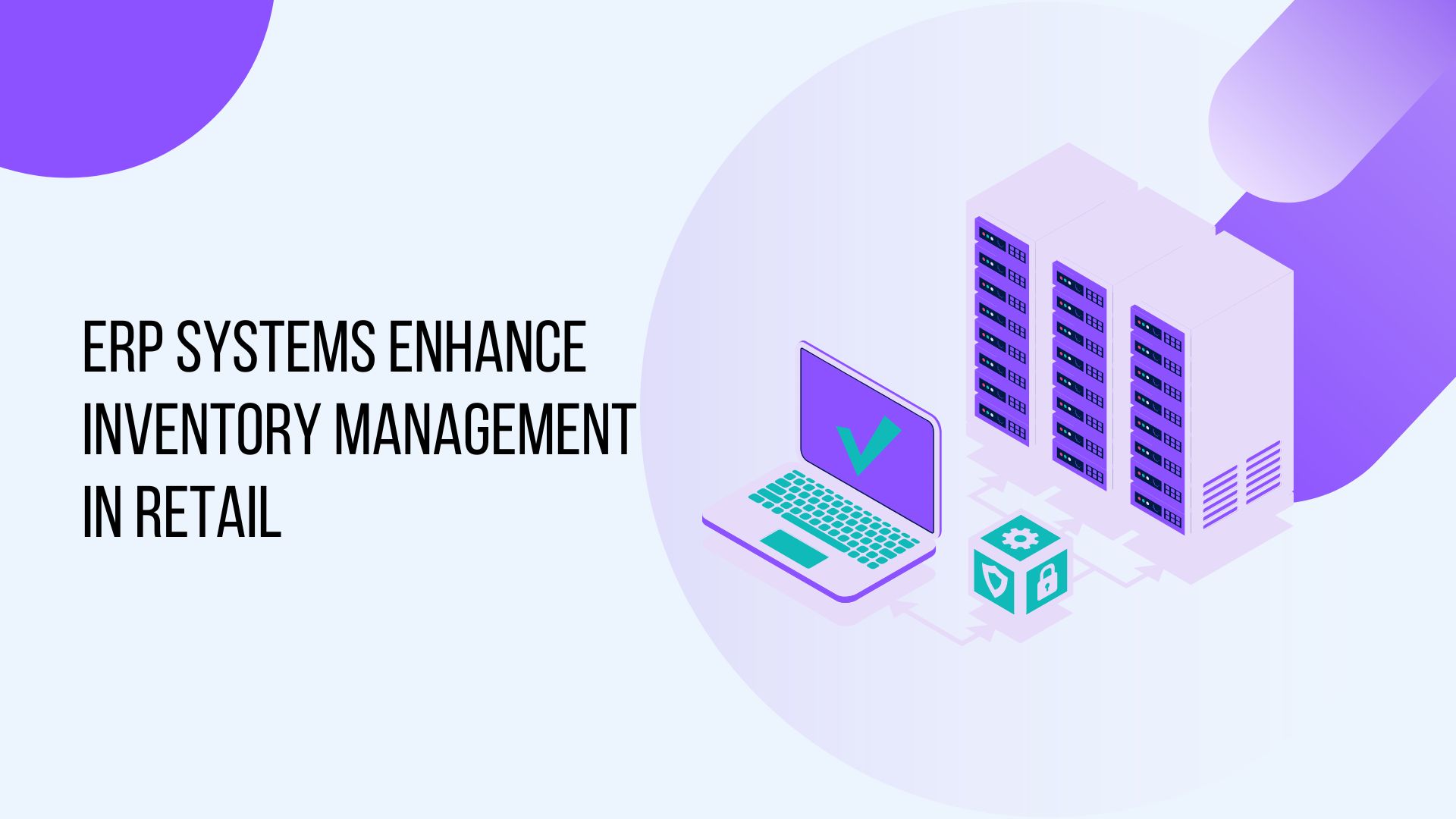How ERP Systems Enhance Inventory Management in Retail

To succeed in a competitive market, it’s a must for retailers to balance between having enough stock to meet demand without overburdening themselves with excess inventory. Enter enterprise resource planning (ERP) systems, which are powerful tools that revolutionize how businesses handle their inventory.
In this article, we will explore the myriad ways in which ERP systems can enhance inventory management in the retail sector, empower retailers to stay agile, reduce costs, and optimize profitability in the competitive retail landscape.
Real-time Inventory Tracking
Knowing what products are available and where they are located in real time is essential for meeting customer demands and avoiding stockouts or overstock situations. Real-time inventory tracking empowers retail businesses to maintain accurate, up-to-date information about their stock levels. ERP systems such as SAP for inventory management facilitate this by integrating data from various sources, including point-of-sale (POS) systems, online sales platforms, and warehouse management systems.
Armed with this consolidated information, retailers can stay on top of the changes in their inventory and stocks. It works this way: when a customer makes a purchase online or in-store, the ERP system instantly updates inventory levels across all channels. This ensures that businesses can efficiently allocate stock, prevent order inaccuracies, and provide a seamless shopping experience to customers.
Demand Forecasting
A critical aspect of inventory management for businesses is demand forecasting, which enables retailers to anticipate customer preferences and plan their inventory accordingly. ERP systems offer advanced forecasting modules that analyze historical sales data, market trends, and seasonal variations to predict future demand. By using this data-driven approach, retailers can optimize their inventory levels, reduce excess stock, and minimize the risk of understocking during peak demand periods.
For instance, a clothing retailer can use ERP-generated demand forecasts to adjust inventory quantities for jackets before the colder months, ensuring they have enough in stock to meet customer needs without overcommitting resources.
Centralized Data
ERP systems act as a centralized repository for all inventory-related information, ensuring consistency and accuracy across the organization. This centralized data access benefits businesses by reducing the likelihood of data entry errors and miscommunication between departments.
For example, when a product's price or description is updated in the ERP system, it automatically reflects across all sales channels, eliminating discrepancies. This cohesion in data management enhances overall operational efficiency, streamlines communication, and enables retail staff to access the most current product information when assisting customers, both online and in-store.
Supplier Management
Effective supplier management is crucial for maintaining a seamless flow of inventory. ERP systems simplify this process by automating various aspects of procurement and supplier relationships. In the case of inventory levels reaching predefined reorder points, the ERP system can generate purchase orders automatically, saving time and ensuring timely restocking.
Another benefit of having supplier management capabilities is that it allows businesses to evaluate supplier performance based on metrics such as delivery timeliness, product quality, and pricing. Analyzing this data enables retailers to make informed decisions about which suppliers to collaborate with or negotiate better terms.
Inventory Optimization
Inventory optimization is a primary goal for any retail business, and ERP systems play a pivotal role in achieving it. These systems utilize algorithms and data analytics to determine optimal reorder points and order quantities. By striking the right balance between overstocking and understocking, retailers can reduce carrying costs, improve cash flow, and enhance profitability.
To demonstrate how inventory optimization is done with ERP, one can look at a grocery store that uses historical sales data to adjust the quantities of fresh produce they order. This ensures that they have enough stock to meet customer demand while minimizing waste from perishable items. The use of ERP-driven inventory optimization leads to more efficient supply chain management and improved profitability for retail businesses.
Multi-Channel Inventory Management
Multi-channel inventory management is essential for retail businesses that operate across various sales channels, including physical stores, e-commerce websites, and mobile apps. ERP systems provide a centralized platform where inventory data is synchronized in real-time across all channels. This synchronization ensures that the quantity and availability of products remain consistent, preventing issues like overselling or out-of-stock situations.
For example, a fashion retailer can use an ERP system to update the available inventory of a popular dress on their website the moment it's purchased in a physical store, allowing the business to provide accurate information to online shoppers.
Stock Rotation
Stock rotation is particularly important for retailers that deal with perishable goods or items with expiration dates, such as food or cosmetics. ERP systems support stock rotation by allowing businesses to implement First-In, First-Out (FIFO) or Last-In, First-Out (LIFO) inventory rotation methods. This ensures that older inventory is sold before newer stock, reducing the risk of spoilage or obsolescence. This is especially relevant for places like supermarkets that can use ERP software to prioritize the sale of products with earlier expiry dates, minimizing waste and optimizing inventory turnover.
Inventory Valuation
Inventory valuation is crucial for financial reporting and tax compliance. ERP systems offer accurate and consistent methods for valuing inventory, such as the Average Cost method or the Specific Identification method. This ensures that businesses maintain transparent and compliant financial records. For instance, a retail chain can use ERP-generated reports to accurately determine the value of its inventory for quarterly financial statements, aiding in decision-making and regulatory compliance.
Reduction in Human Errors
Human errors in inventory management can lead to costly mistakes, but it’s possible to reduce these errors by automating data entry and calculation tasks through the use of ERP systems. Instead of manually updating inventory counts, an ERP system can automatically adjust quantities as products are sold or received. This minimizes the risk of inaccuracies caused by human oversight, ensuring that inventory data remains reliable and consistent.
Custom Reporting and Analytics
Custom reporting and analytics capabilities offered by ERP systems empower retail businesses to make data-driven decisions. By using ERP solutions, businesses can generate customized reports on various inventory-related metrics, such as turnover rates, sales trends, and product performance. Through the use of ERP-generated reports to identify which items are best-sellers and which are underperforming, for example, fashion retailers can adjust their inventory and marketing strategies accordingly. With the complete data on hand, businesses can make informed decisions and remain agile in responding to market changes and customer preferences.
Incorporating ERP systems with these capabilities into inventory management processes not only streamlines operations but also enhances the overall competitiveness and profitability of retail businesses. These systems enable retailers to meet customer demands efficiently, reduce costs, minimize waste, and make informed decisions to stay ahead in the ever-evolving retail landscape.

Wayne Kernochan has been an IT industry analyst and auther for over 15 years. He has been focusing on the most important information-related technologies as well as ways to measure their effectiveness over that period. He also has extensive research on the SMB, Big Data, BI, databases, development tools and data virtualization solutions. Wayne is a regular speaker at webinars and is a writer for many publications.



